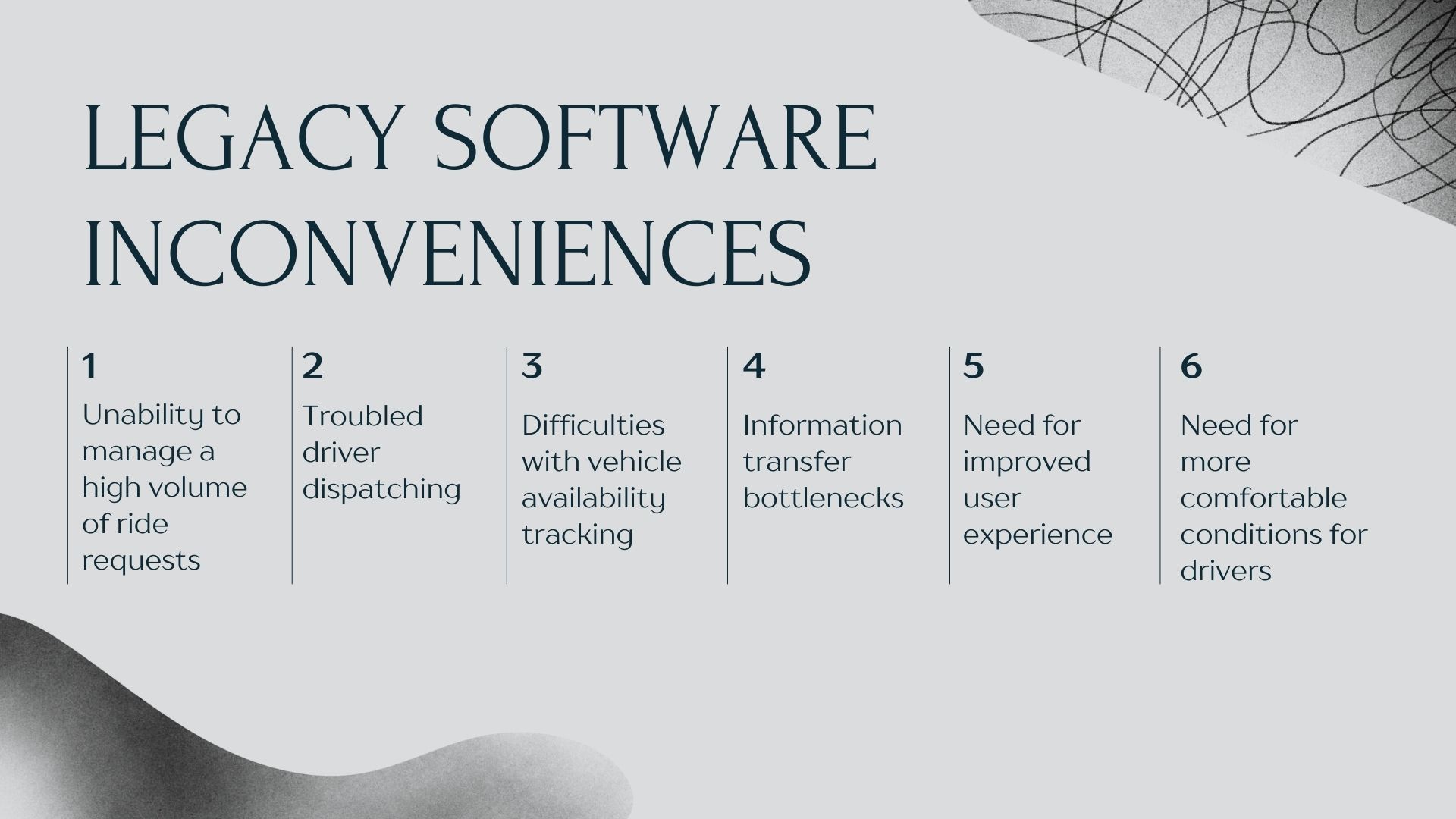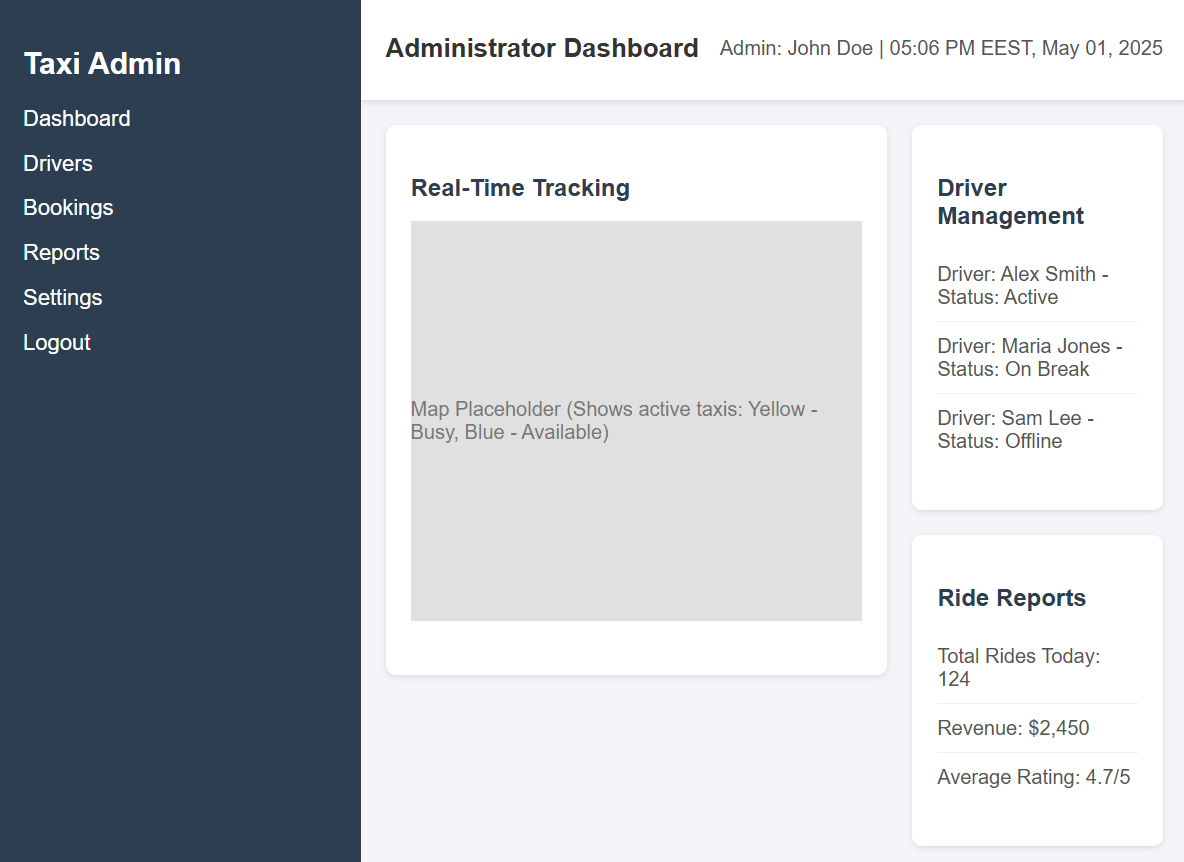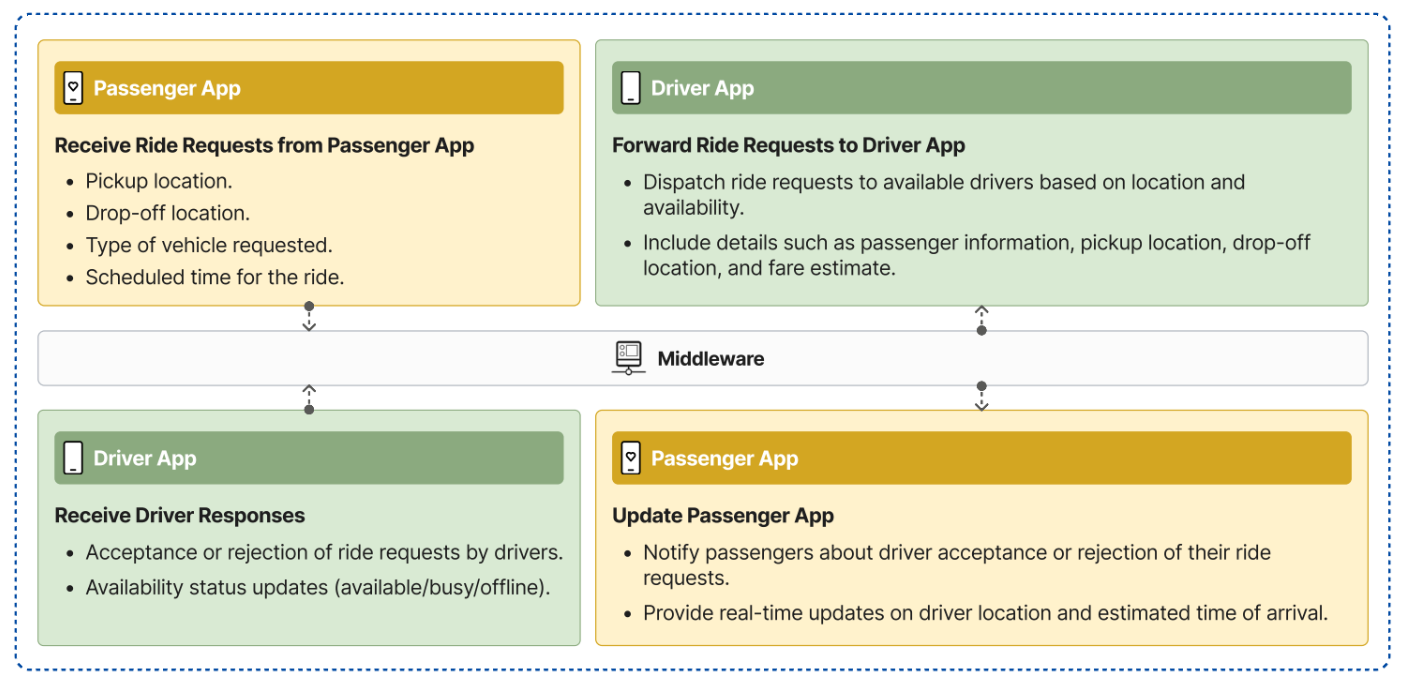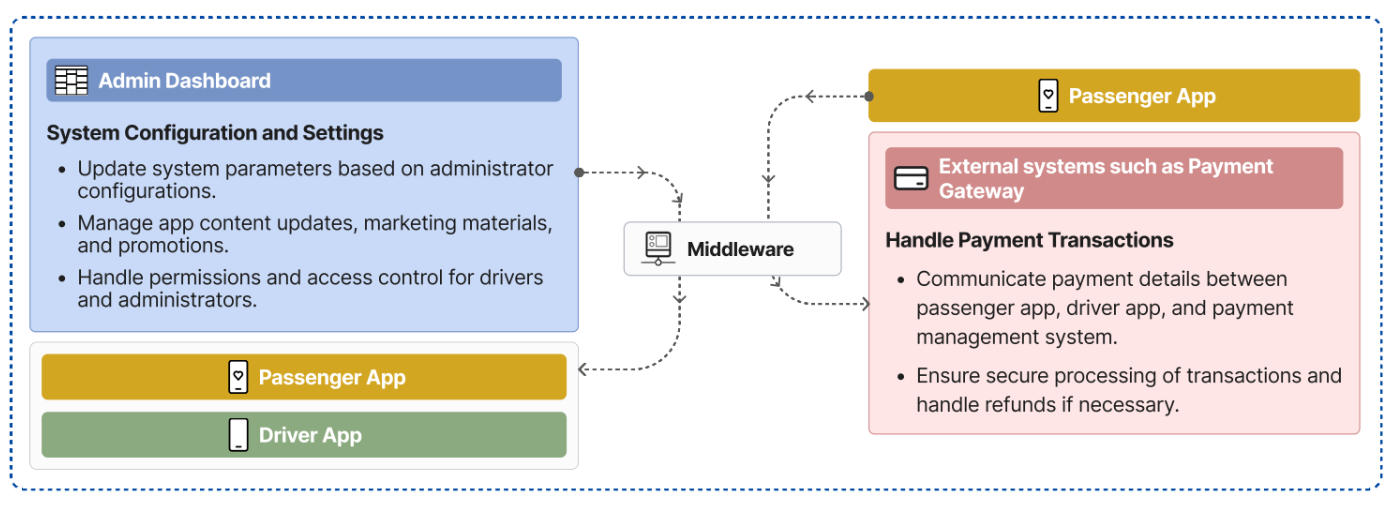The Objective Behind the Project
A taxi service company approached Infinity Technologies to develop new software to streamline operations, improve service quality, and increase revenue generation. A new intuitive platform was also needed to enhance customer satisfaction, boost their loyalty, and provide drivers hassle-free logic of accepting ride requests based on availability and location.
Defining the Core Challenge
The client faced a range of inconveniences connected with their legacy software, which made it difficult to manage a high volume of ride requests, effectively dispatch drivers, and track vehicle availability. Users, drivers, and administrators were using different software, resulting in bottlenecks in information transfer between them.
Additionally, the client wanted to increase revenue generation by offering improved customer service and better working conditions for drivers. Therefore, the decision was made to review the existing software for trouble spots and develop a brand-new custom solution, considering previous experience.
Solving the Challenge
The new taxi service software aims to solve both business and client needs: scalability, intuitive usage by drivers and end clients, automated tracking of available drivers, a matching engine (client requests with available drivers at a definite location), and an automated fare calculator.
To achieve this, our expert team at Infinity Technologies developed an ecosystem of applications represented by the core orchestrator and front-end applications for passengers, drivers, and administrators, connected into a single solution by middleware.
AI integration
allows for automated fare settings based on distance, time, and demand.
Role-based access control
ensures the safety of the applications and allows access only for authorized users within the defined roles.
The referral program
allows for earning commission for each person invited to the application, resulting in new customers and drivers registering within the service.
The combination of functions for each front-end application was chosen considering the Client’s previous experience and best industry practices. Namely, analytics dashboards for administrators allowed for better data-driven decisions.
Passenger Application
01
Registration and Login
End clients (passengers) create accounts in the mobile application using their emails or phone numbers.
02
Ride Booking
The booking interface, integrated with GPS and Google Maps. enables users to input their pickup and drop-off locations, choose the type of vehicle, and schedule a ride for now or later time.
03
Passenger-Driver Interaction
When a user requests a ride through the app, the request data is sent to the server via API. The server processes the request and sends it to available drivers through the driver app using push notifications and real-time updates. The driver app receives ride requests, and a driver can accept or reject it. The response is sent back to the server via API and the status of the request is changed simultaneously.
04
Payment Options
Integrated payment options allow passengers to pay using different debit/ credit cards, mobile wallets, or cash.
05
Ride History
The application keeps a record of past rides, including details like distance, route, and fare. The passenger can request a repetitive ride by the same route in one click.
06
Rating System
Passengers rate drivers and provide feedback after their rides.
Driver Application
01
Registration and Login
Drivers create their profiles in the driver app and update personal information including name, phone number, photo, etc.
02
Ride Requests
Drivers see requests in their area and can accept or reject them based on availability. The algorithm analyzes drivers’ locations and ride requests, to find the most efficient way of matching a driver with their passenger. The request includes information about the passenger, pickup location, destination, and fare estimate. Drivers can also set their availability status (available/busy/offline).
03
Routing
Integrated GPS navigation and Google Maps help to build optimized routes for passenger pickups and drop-offs.
04
Drivers Dashboard
An easy-to-comprehend dashboard shows statistics on the completed rides, performance metrics, and earnings by shift, week, or month.
05
Rating System
The tool enables drivers to rate passengers and view their ratings.
06
Document Upload
A secure tool allows drivers to upload required documents such as driver’s license, vehicle registration, and insurance.
07
Driver-Administrator Interaction
The driver app sends driver registration/login data, ride acceptance/rejection, status updates, and earnings information to the server via API. The administrator dashboard can view and manage driver profiles, ride assignments, driver earnings, and performance metrics received through the driver app.
Admin Dashboard
01
User Management
Administrators can assist users in resolving account and ride-related issues.
02
Live Chat
The live chat option helps resolve passenger requests in real-time and address complaints.
03
Driver Management
Administrators can manage driver profiles, onboard and offboard new drivers, verify documents, and communicate with drivers in real-time to resolve arising issues.
04
Analytics and Reports
A dashboard allows for generating reports on key metrics such as total rides, revenue, and drivers’ performance. Gathered metrics can be used to create special offers, manage driver workload, adjust pricing, etc.
05
Promotions and Discounts
The promotion and discounts feature helps create and manage promotional campaigns, send discount codes, and offer referral programs to improve client loyalty.
06
Feedback and Review Management
Administrators have immediate access to passenger and driver ratings. They monitor and moderate user and driver reviews to maintain service quality and resolve issues.
07
System Settings
Administrators configure system parameters, update app content – namely: send marketing materials and promotions, and manage platform settings and permissions, allowing or restricting the drivers’ access to the application if needed.
08
Payment Management
Administrators can review transactions and handle refunds if needed.
Ecosystem of a Taxi Service
The middleware in the ecosystem plays a crucial role in facilitating communication between the different applications (passenger app, driver app, admin dashboard) and ensuring the seamless operation of the taxi service.
Here are some of the key functions and requests that the middleware handles:
Overall, the middleware is the backbone of the taxi service ecosystem, ensuring efficient communication and coordination between the various applications and stakeholders involved.
The new solution ensured efficient operations management through automation, scalability, better performance, and administrative tools.
It improved service quality by introducing a new passenger application with its intuitive interface. Thanks to the effective architecture, bottlenecks in data transfer between passengers, drivers, and administrators are no longer an issue.
Multiple secure payment options, improved usability, and transparent AI-based fares attracted new customers and enhanced their loyalty. Effective feedback mechanisms helped gather information about issues and address them promptly, increasing customer satisfaction.
User-friendly mobile apps, coupled with effective marketing tools, helped our client establish a strong brand presence in the market and attract more drivers interested in cooperation. Through efficient management, idle time for drivers was reduced, resulting in better performance and increased revenue.
The new solution enabled the taxi service to achieve the following:
01
Automate
operations management and increase revenue by 30% within a year.
02
Boost
customer loyalty by 45% and improve the referral rate by 15% within six months.
03
Increase
drivers’ revenue by 25% (due to better ratings, tips, and more frequent ride requests) within a year.
04
Reduce
resource churn by 20% within a year through improved drivers’ revenue and our intuitive app.
The Resources Needed for a Project Realization
- 1 Product owner
- 2 Backend developers
- 3 Frontend developers
- 2 Mobile developers
- 1 BA
- 1 QA
- 1 UX/UI designer
- 1 DevOps engineer
18 months









